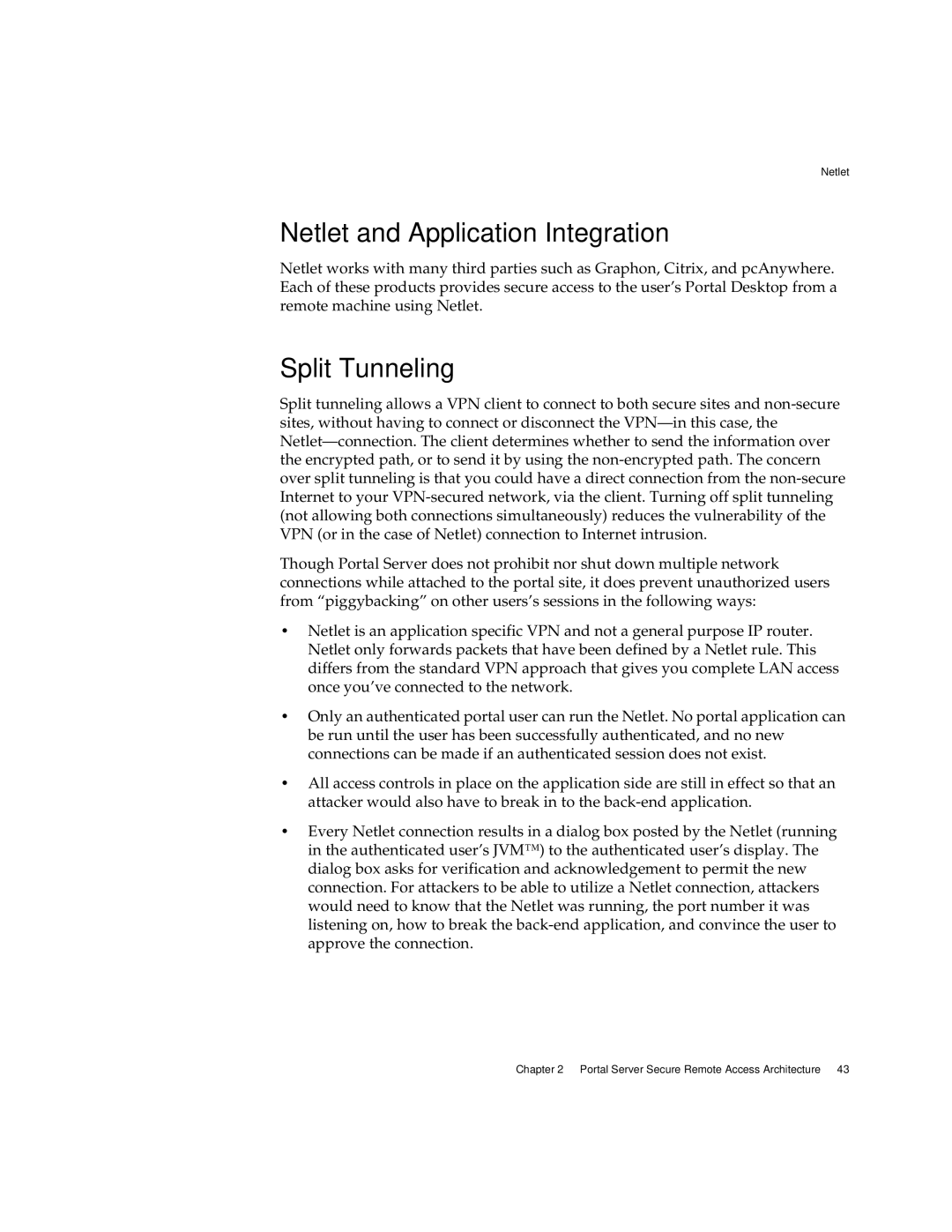Netlet
Netlet and Application Integration
Netlet works with many third parties such as Graphon, Citrix, and pcAnywhere. Each of these products provides secure access to the user’s Portal Desktop from a remote machine using Netlet.
Split Tunneling
Split tunneling allows a VPN client to connect to both secure sites and
Though Portal Server does not prohibit nor shut down multiple network connections while attached to the portal site, it does prevent unauthorized users from “piggybacking” on other users’s sessions in the following ways:
•Netlet is an application specific VPN and not a general purpose IP router. Netlet only forwards packets that have been defined by a Netlet rule. This differs from the standard VPN approach that gives you complete LAN access once you’ve connected to the network.
•Only an authenticated portal user can run the Netlet. No portal application can be run until the user has been successfully authenticated, and no new connections can be made if an authenticated session does not exist.
•All access controls in place on the application side are still in effect so that an attacker would also have to break in to the
•Every Netlet connection results in a dialog box posted by the Netlet (running in the authenticated user’s JVM™) to the authenticated user’s display. The dialog box asks for verification and acknowledgement to permit the new connection. For attackers to be able to utilize a Netlet connection, attackers would need to know that the Netlet was running, the port number it was listening on, how to break the
Chapter 2 Portal Server Secure Remote Access Architecture 43
